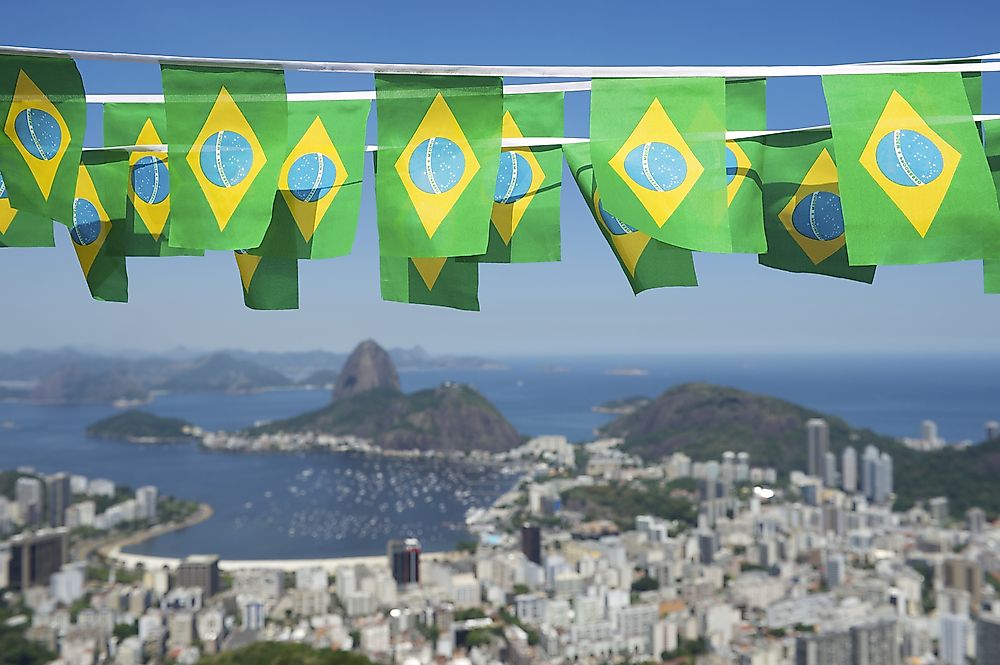When Did Brazil Declare Independence?

Brazil declared independence from the Portuguese on September 7, 1822. The independence was proclaimed by Prince Pedro; the first ruler of the Empire of Brazil. Every year on September 7th, Brazil celebrates independence day.
The Colonization of Brazil
Present day Brazil came under Portuguese control in April 1500 after a Portuguese fleet under the command of Pedro Álvares Cabral set camp in the area. They encountered the indigenous people and the communities divided into several tribes, each with their own system of leadership.
The Portuguese began settling in 1532, and by 1534 they had actively colonized the resident communities. At first, King John III divided Brazil into fifteen colonies but administrative problems led the king to appoint a Governor-General. Africans were brought to work on the sugar farms as the Portuguese expanded southeast. They captured Rio de Janeiro in 1567 and São Luís in 1615. They captured the Dutch and English strongholds, and by 1680 they had expanded southwards beyond Rio de la Plata, in present-day Uruguay.
The Path to Independence
After the French invaded Portugal in 1807, the Royal family fled to Brazil where they established Rio de Janeiro as the capital city. In 1815, the French army was defeated and ousted from Portugal. King John VI of Portugal made Brazil an equal member of the United Kingdom of Portugal, Brazil, and the Algarves.
In 1815, King John VI gave his son Prince Pedro authority to govern Brazil in his place. However changes in 1832 left Brazil a province of Portugal, and Prince Pedro the Governor of Rio de Janeiro. Pedro, along with inhabitants of Brazil, were unhappy with the recent developments. When Pedro was ordered back to Portugal in January of 1822, he refused. When in September 1822, Pedro learned that the Portuguese assembly had stripped him of his power, he swore to gain Brazil its independence from Portugal.
The War of Independence
In 1822, skirmishes between rival militia began and lasted until January 1824 when Portuguese naval units and army garrisons surrendered and left Brazil. The imperial government in Brazil enlisted slaves and volunteers into the army and the navy. They took control of Rio de Janeiro and the central part of Brazil. Militias loyal to the independence course reinforced the Brazilian army. The navy was able to seize 11 warships that were previously owned by the Portuguese.
The main problem facing the navy was manpower, a large part of the naval crew consisted of Portuguese who were mutinous. Although they had declared allegiance to Brazil, they could not be trusted. The Brazilian government secretly recruited about 500 sailors and 50 officers from Liverpool and London, many of who had participated in the Napoleonic Wars.
On April 1, 1823, a fleet of 6 Brazilian ships headed towards Bahia. The Brazilians placed a blockade and prevented supplies from reaching Bahia. The Portuguese evacuated Bahia and left for Portugal in a convoy of 90 ships. By November 1823, northern Brazil was under the control of the Brazilian forces. Demoralized, the Portuguese left Montevideo and the Cisplatine Province, and by 1824 all Portuguese forces had left Brazil.
Aftermath of Brazilian Independence
Pedro II took over as the Emperor of Brazil and developed a keen interest in liberating other countries, notably Uruguay. In 1852 Brazil helped Argentina overthrow dictator Juan Manuel de Rosas. Although Paraguay invaded Brazil with the aim of suppressing its political and military influence in the region, the Argentinians and Uruguayans joined in favor of Brazil and defeated the Paraguayans and overthrew leader Francisco Solano López.











